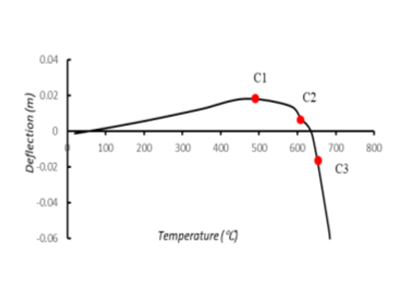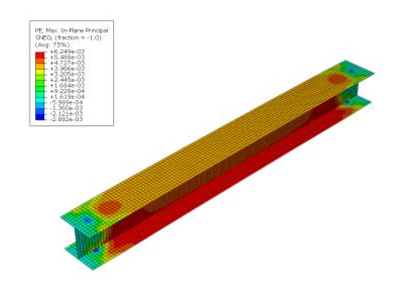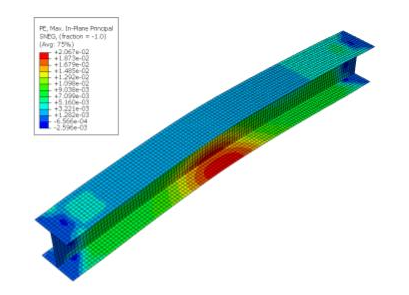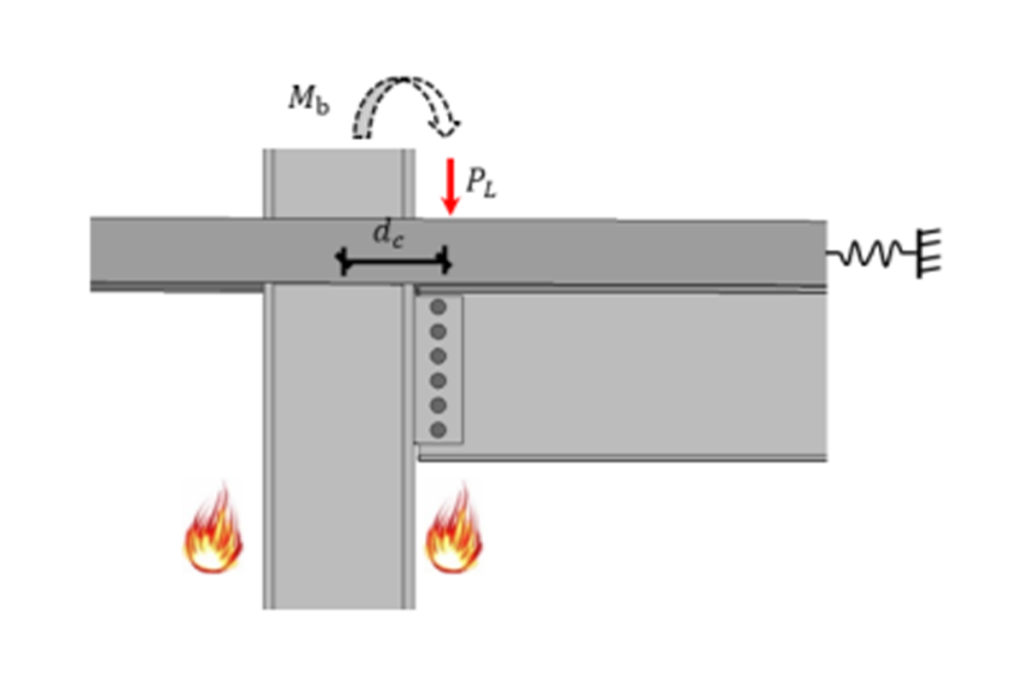“Steel columns are most likely to expand vertically when subjected to fire, resulting in an increase in internal force within the steel column. Due to material degradation in a fire, the column will buckle and fail quickly.
However, previous research on the restraining influence of connected elements on steel columns has primarily focused on the point at which the column’s internal force returns to its initial value [1]. Research of this nature has primarily explored the structural fire performance of restrained columns during the expansion phase while neglecting their performance during contraction. However, structural stiffness plays a significant role in limiting the vertical deflection of the column during contraction, as demonstrated in experimental research conducted at Tongji University [2]. Therefore, this study aims to comprehensively investigate the performance of restrained columns in fire. The objective of this study is to fully examine the performance of both continuous and non-continuous restrained columns in a fire.
For non-continuous steel columns, we used a 3m-long 310UC158 column as a case study. The time-axial deformation curve is presented in Figure 1 (a). The column expanded with heating until it reached buckling at point C1, after which the internal force along the column dropped to the applied load value at point C2, and it eventually failed at point C3. The deformation shape is depicted in Figure 1 (b) and (c). It’s evident that the column only reached its plastic deformation at C2 and was still far from its ultimate limit stage, as shown in Figure 1 (c).”



Figure 1. Simulation results of steel column 3m in length.
In engineering practice, the load from a steel beam may induce a bending moment at the center of the column. The effect of this eccentric loading condition was considered in a case study of a 6m continuous steel column (310UC158), as shown in Figure 2. However, the simulation results indicated that the lateral moment from the connected beam has a negligible impact on the fire resistance of continuous steel columns.

Figure 2. Loading condition of a continuous steel column in engineering practice
The case study conducted in this research, using ABAQUS, suggests that the restraint effect has a negligible impact on the fire resistance of continuous steel columns, but it is more evident for non-continuous steel columns. The eccentric loading condition made only a limited difference to the fire resistance of steel columns. Additionally, the comparison indicates that the current design approach in EN 1993-1-2 is slightly conservative when predicting the column’s limiting temperature.

